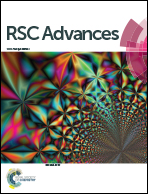Synthesis of polypyrrole nanoparticles for constructing full-polymer UV/NIR-shielding film
Abstract
A prerequisite for the selective shielding of solar light is to develop optical materials and coatings, and traditional shielding materials usually combine rare/expensive metal element and also have potential heavy-metal pollution after being abandoned. To solve this problem, herein we develop polypyrrole (PPy) nanoparticles as a novel kind of metal-free ultraviolet (UV)/near-infrared (NIR) shielding material. PPy nanoparticles with diameter of ∼50 nm are synthesized by a simple solution polymerization route, and they exhibit weak absorption in visible region but strong UV/NIR photoabsorption. Subsequently, PPy nanoparticles are mixed with polyacrylic acid (PAA) resin for the preparation of PPy–PAA full-polymer films. PPy–PAA films exhibit good transparency in visible region (400–780 nm) but can efficiently absorb UV (305–400 nm) and NIR (780–2500 nm) light, for example, 0.34 mm-thick film with 0.05 wt% PPy can transmit 63.1% visible light but shield 47.2% UV and 80.9% NIR light. When this PPy–PAA film coated glass is used as the window of the sealed black box, the interior air temperature of the box goes up from room temperature of 25.0 °C to 29.2 or 33.9 °C in 1500 s under the irradiation of strong solar light (0.3 or 0.5 W cm−2). Its temperature elevation (4.2 or 8.9 °C) is remarkably lower compared with that (7.3 or 15.7 °C) from glass slide as window under the other identical condition, resulting from excellent NIR shielding property of PPy. Therefore, PPy nanoparticles have great potential as a novel UV/NIR shielding material for the development of cost-efficient energy-saving full-polymer windows without potential heavy-metal pollution.



 Please wait while we load your content...
Please wait while we load your content...